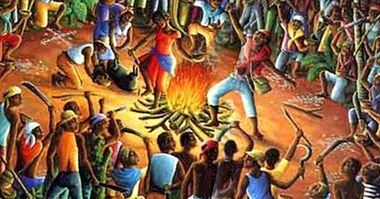The 6 differences between modernity and postmodernity
Modernity and postmodernity are concepts that we use especially in the human and social sciences and that have helped us to understand some characteristics of our societies as well as the transformations through which we have passed.
Often they are concepts that are used as opposites or as a way to explain the passage from one historical period to another, however, modernity and postmodernity refer to elements that coexist, which are very complex and can not be understood separately. .
Taking this into consideration we will explain very roughly some relationships and differences between modernity and postmodernity .
- Maybe you're interested: "How are Psychology and Philosophy alike?"
A change of era?
In very general terms, modernity is the era that began between the fifteenth century and the eighteenth century in Western societies, from social, scientific, economic and political transformations .
For its part, postmodernity refers to the second half of the 20th century, and it is also known as "late modernity", "postmodern era" or even "postmodernity-in-modernity", precisely because the temporal limits between one and the other are not fixed or determined.
The term postmodernity is not synonymous with antimodernity, and the prefix "post" not only refers to something that comes "after", but it is a concept that has served to unveil theoretical and political movements that had begun in modernity .
Because, one of the great theorists of postmodernity, Jean-François Lyotard, he defines it as a "rewrite modernity". In other words, postmodernity is not so much a new era, as the development and updating of the projects that modernity had begun.
6 differences between modernity and postmodernity
Modernity and postmodernity are stages that can not be understood as independent or opposite, but as a set of social, political, economic, scientific events.
That is to say, that the differences that we will see next they do not mean that you have gone completely from one paradigm to another , but constant transformations have taken place in different areas of social life.
1. The scientific paradigm and the question of the subject
During modernity, man became a subject . That is to say, that everything is understood with reference to him, including nature and human activity in general. Therefore, the basic question for modern philosophical and scientific knowledge is what is being?
On the other hand, postmodernity is characterized by "the death of the subject", because knowledge is no longer centered on the human being, and the truth is no longer considered a universal reality , but a constant unveiling. Thus, the basic question for philosophy and science is no longer what being is, but how can I know it?
Science in postmodernity is done in a transdisciplinary way, rejecting deterministic materialism , and is integrated into society through the development of technology. Also try to leave the opposite as body mind, man-woman.
- Maybe you're interested: "These disciplines are used to study differently the human being and his behavior."
2. Getting sick is not so bad
During modernity the body is understood as an isolated object, separated from the mind and composed mainly of atoms and molecules, with which diseases are understood as the malfunction of these molecules, and their cure depends exclusively on the doctor and the drugs .
In postmodernity, the body is no longer understood as an isolated object , but in connection with the mind and the context, with which health is not only the absence of the disease but a balance that depends to a great extent on each individual. The disease is then a language of the body and has certain purposes, that is, a more positive meaning is attributed to it.
3. From rigidity to educational flexibility
In the field of formal education, the most representative paradigm shift is that the educational task is no longer centered on the activities of the educator , but the learner is given a more active role and collaborative work is reinforced.
Education stops promoting rigid norms and is committed to the goal of forming people who are integral and united to both nature and the community. It goes from being completely rational to being rational and intuitive, as well as from rigidity to flexibility and from hierarchy to participation.
The same has repercussions in the styles of parenting, parents cease to be authoritarian to be more flexible, open to negotiation and sometimes very permissive.
4. The failure of authoritarian systems
The political terrain is characterized by promoting a step of the authoritarian and institutional system towards a consensual system and non-governmental networks . Thus, political power that was previously centralized, becomes decentralized, and develops ideals of social cooperation.
For example, NGOs (Non-Governmental Organizations) are emerging and new political values are being sought. Likewise, politics is strongly marked by globalization, a paradigm that drives a global thought with local actions and that tries to reduce the borders between nations. However, globalization also becomes an update of the inequalities promoted by modern colonialism.
5. The global economy
In relation to the above, the economy goes from being local to being global. However, although in postmodernity large economic spaces are sought, societies reinforce regionalism and tend to return to the small forms of economic and political organization.
There is a change in the domination of capital that promotes consumer lifestyles, to promote a responsible consumer quality. Likewise, the work is no longer linked only to the obligation and begins to link with personal development.
The masculinisation of the labor sector is revealed and the collective responsibilities that build relationships as a team and not simply labor are promoted. The development of technology is one of the protagonists of the ideals of progress. It's about giving the economy a humanistic transformation that allows other types of coexistence.
6. The community and diverse families
Socially there is an exaltation of ecological values that were previously purely material . If in modernity the ties were rather contractual, in postmodernity the creation of community bonds is reinforced.
The same happens in the field of customs and traditions, which were previously rigid and now become very flexible. It is about integrating thought with feeling, a question that had been separated during modernity.
On the other hand, family values are promoted that go from promoting the large family to insisting on birth control. There is more flexibility in couples , that no longer focus on entering into a relationship with a person for life. Likewise, the traditional family is transformed, it is no longer centered on relationships of two, nor only among heterosexual people.
Bibliographic references
- Zeraoui, Z. (2000). Modernity and postmodernity: the crisis of paradigms and values. Noriega: Mexico, D.F.
- Amengual, G. (1998). Modernity and crisis of the subject. Caparrós: Madrid.
- Roa, A. (1995). Modernity and postmodernity: coincidences and fundamental differences. Editorial Andrés Bello: Santiago de Chile.



















